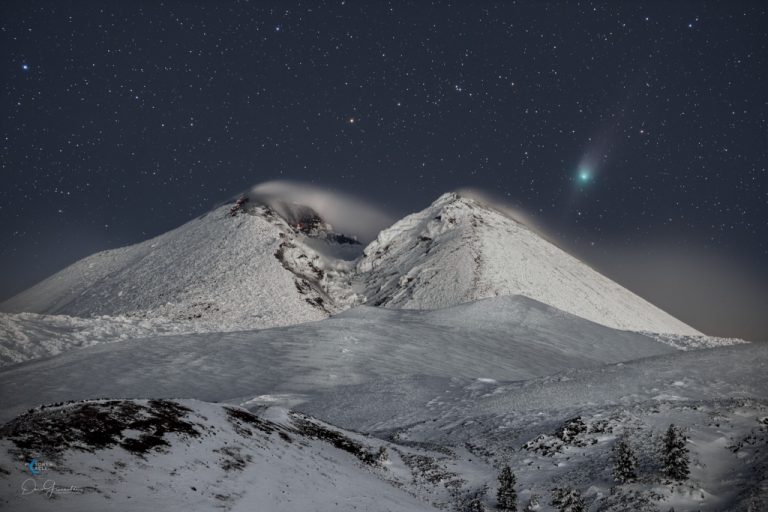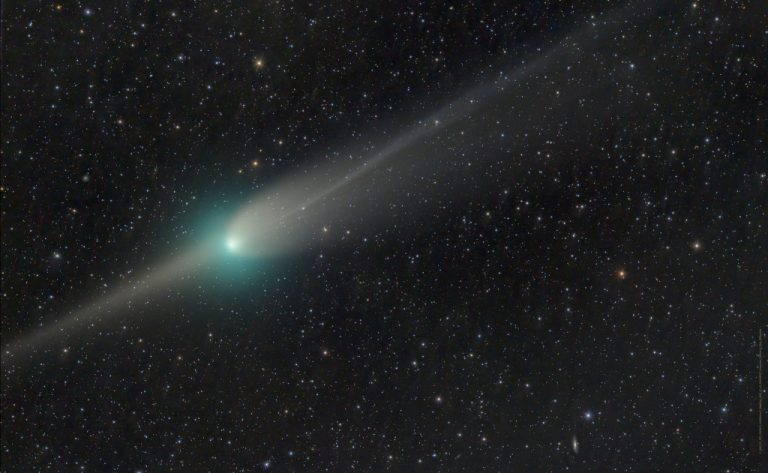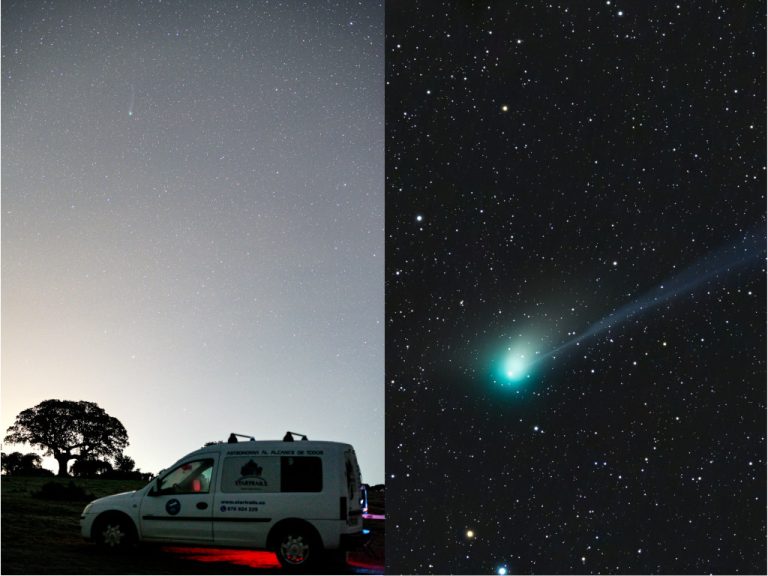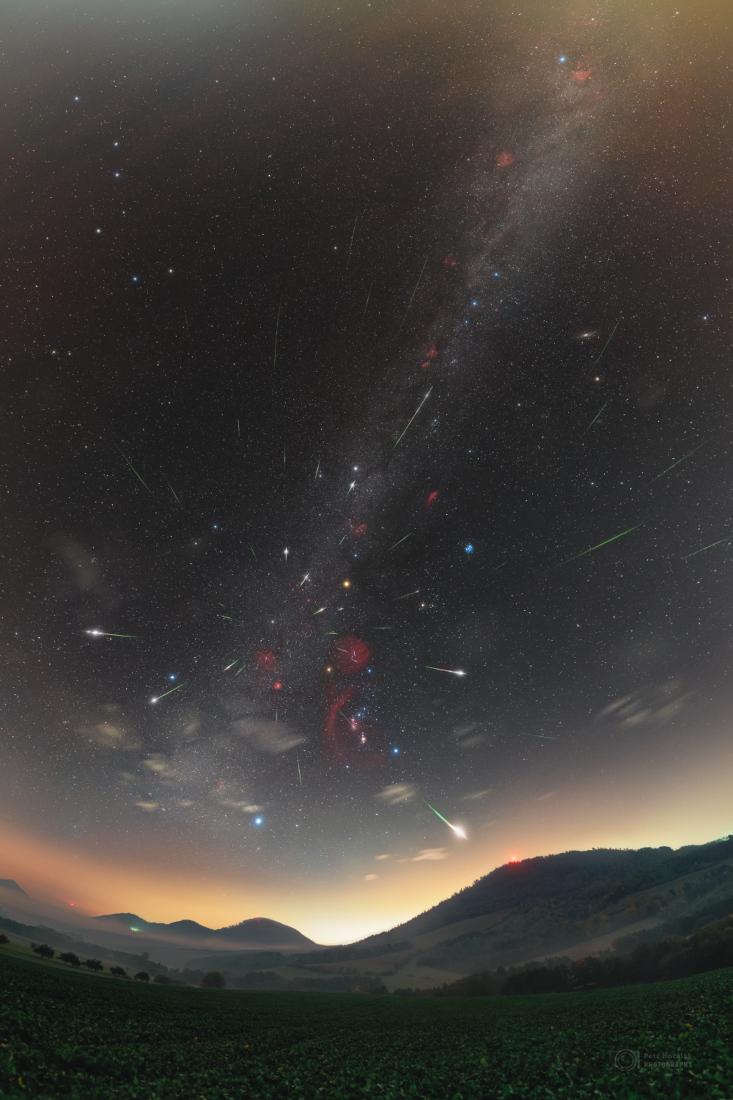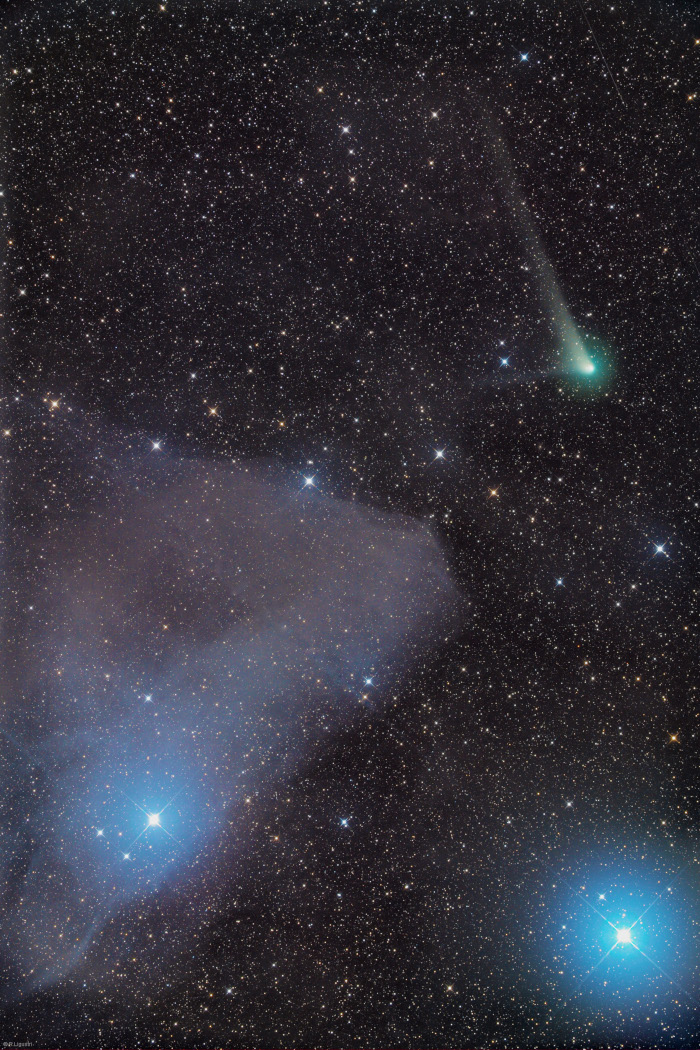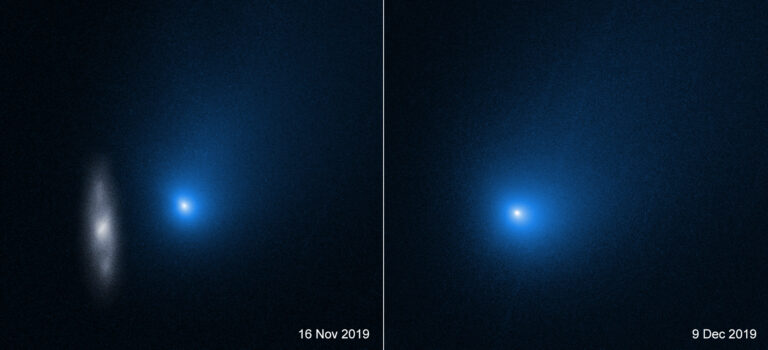埃特纳火山上空的ZTF彗星
2023年1月28日 Comet ZTF over Mount Etna Image Credit & Copyright: Dario Giannobile Explanation: Comet-like plumes are blowing over the volcanic peaks of Mount Etna in this wintry mountain-and-skyscape from planet Earth. The stacked and blended combination of individual exposures recorded during the cold night of January 23, also capture naked-eye Comet ZTF just above Etna’s snowy slopes. Of course increasing sunlight and the solar wind are responsible for the comet’s greenish coma and broad dusty tail. This weekend Comet ZTF is dashing across northern skies between north star Polaris and the Big Dipper. From a dark site you can only just spot it as a fuzzy patch though. That’s still an impressive achievement if you consider you are gazing at a visitor from the distant…

